
Roots
Have you ever paused, perhaps on a particularly misty morning or a crisp, dry afternoon, to truly consider the silent dialogue between your coiled strands and the very air around you? It is a conversation as old as time, a subtle yet profound exchange that dictates the health and appearance of textured hair. We often perceive our hair as a static entity, yet it is a dynamic, living-feeling structure, constantly reacting to its environment. The moisture barrier, a delicate shield, stands as the primary negotiator in this atmospheric dance.
Understanding its behavior, particularly in the face of shifting humidity, unveils a deeper appreciation for the resilience and specific needs of coiled hair. This exploration is a journey into the elemental understanding of why our hair behaves as it does, offering insights that feel both ancient in their wisdom and modern in their scientific grounding.
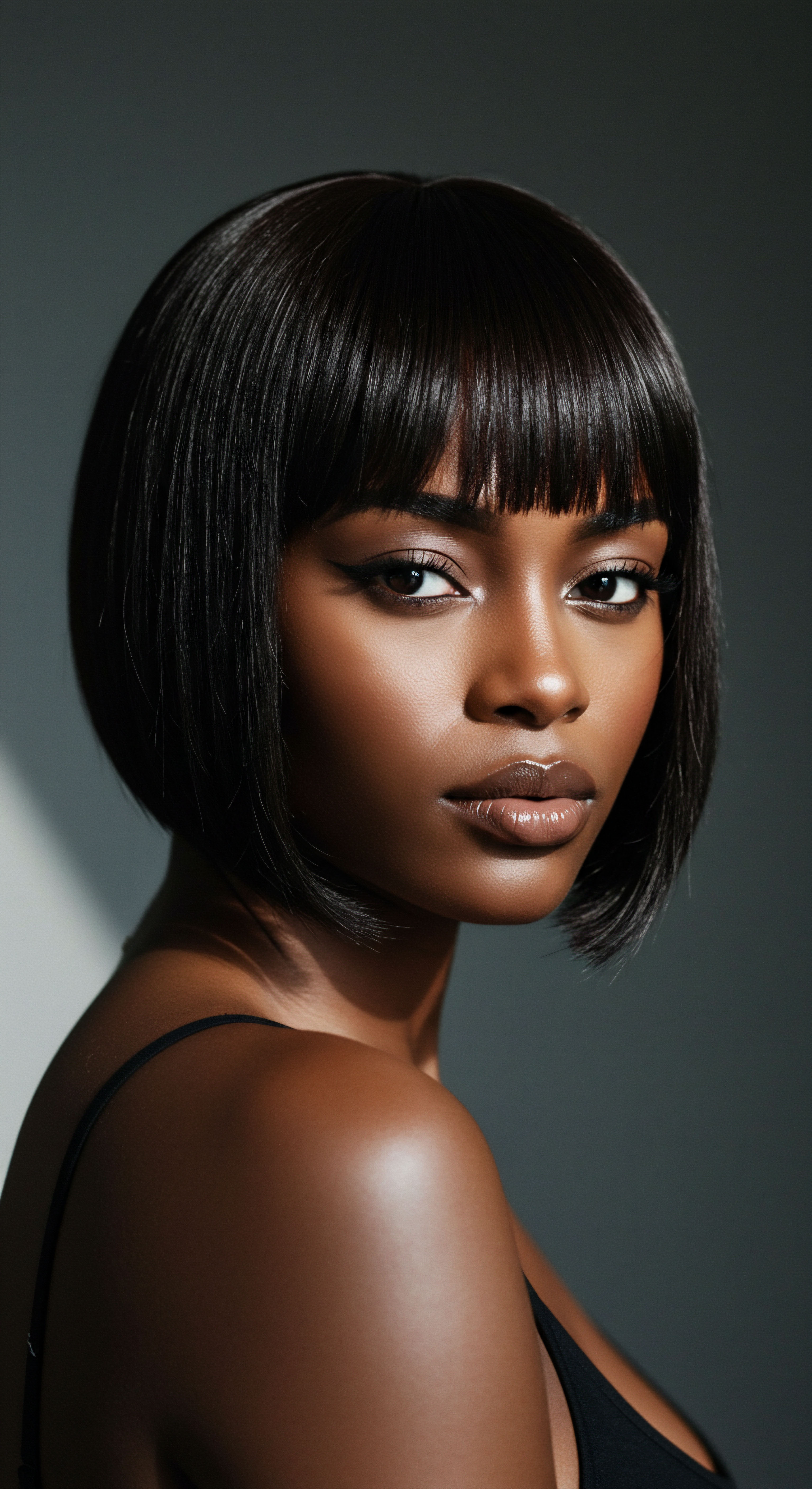
Hair’s Outer Defense The Cuticle’s Role
At the outermost frontier of each hair strand lies the Cuticle, a protective layer composed of overlapping, flattened cells. Think of these cells as tiny, transparent shingles on a roof, meticulously arranged to shield the inner core. In a healthy state, these cuticle scales lie flat and smooth, creating a relatively impermeable surface that reflects light, imparting a natural sheen. This tightly sealed arrangement is critical for maintaining the hair’s internal moisture.
However, the coiled nature of textured hair inherently presents a unique architectural challenge. The uneven shape of curly and coily strands creates natural “dips and lifts” along the hair shaft. At these higher points, the cuticle can naturally lift, exposing the hair’s inner layers to the whims of the surrounding atmosphere.
This structural characteristic means that coiled hair often possesses a higher inherent porosity compared to straighter hair types. Porosity refers to the hair’s ability to absorb and retain moisture. While Asian hair might boast more than 12 cuticle layers, and Caucasian hair typically ranges from 4 to 7, Afro-textured hair generally presents fewer layers, between 3 to 7. This lower cuticle count, while potentially allowing for efficient hydration in warm, humid native environments, also means moisture can escape more readily, particularly in dry conditions.

The Inner Core and Its Hydration Dance
Beneath the cuticle lies the Cortex, the hair’s primary bulk. This region is composed mainly of bundles of keratin proteins, held together by various bonds, most notably disulfide bonds and hydrogen bonds. Disulfide bonds are robust, providing the hair’s inherent strength and are largely unaffected by humidity.
Hydrogen bonds, however, are far more transient and play a central role in how hair responds to moisture. These bonds form between water molecules and the keratin proteins.
When hair encounters water, these hydrogen bonds readily break and reform. This is precisely why a straightened style might revert to its natural curl pattern when exposed to humidity. The presence of abundant water molecules in humid air encourages the formation of new hydrogen bonds, pulling the keratin proteins into their coiled configuration.
The internal lipids within the hair cuticle layers also play a significant part in maintaining integrity, hydrophobicity, and moisture. Afro-textured hair, despite sometimes being characterized as dry, exhibits a higher overall lipid content compared to European and Asian hair, which contributes to its physical properties, including moisture retention.
The hair’s outermost cuticle, with its unique overlapping scale arrangement, serves as the initial line of defense against atmospheric moisture shifts.

What is a Moisture Barrier and How Does It Function?
The moisture barrier of hair is not a single, tangible layer but rather a complex interplay of the cuticle’s integrity, the hair’s natural lipids, and the presence of products that seal and protect the strand. It acts as a gatekeeper, regulating the flow of water in and out of the hair shaft. A well-functioning moisture barrier prevents excessive water absorption in humid conditions, which can lead to swelling and frizz. Simultaneously, it curbs moisture loss in dry environments, which would otherwise result in brittle, parched strands.
The 18-Methyleicosanoic Acid (18-MEA) layer, a lipid covalently linked to the epicuticle (the outermost part of the cuticle), grants the hair surface its hydrophobic, or water-repellent, character. When this layer is compromised, perhaps through chemical treatments like bleaching or relaxing, the hair becomes more hydrophilic, meaning it has a stronger affinity for water. This increased hydrophilicity makes the hair more susceptible to swelling and can lead to increased fragility and friction between individual strands.
| Component Cuticle |
| Primary Composition Overlapping keratinized cells |
| Role in Moisture Barrier Protective outer layer; controls water entry and exit. |
| Component Cortex |
| Primary Composition Bundles of keratin proteins |
| Role in Moisture Barrier Maintains hair shape and elasticity; affected by hydrogen bonds with water. |
| Component 18-MEA Layer |
| Primary Composition Lipids covalently linked to epicuticle |
| Role in Moisture Barrier Provides surface hydrophobicity, repelling excess water. |
| Component Understanding these elements helps in comprehending how coiled hair interacts with its environment. |

Ritual
As we move from the foundational understanding of hair’s structure, a natural curiosity arises ❉ how do we actively engage with our hair to honor its unique properties and protect it from the environmental dance of humidity? This section invites us into the realm of intentional practice, of the daily and periodic rituals that shape our hair’s resilience. It is about practical wisdom, gently guiding us through methods and techniques designed to maintain moisture equilibrium, transforming potential challenges into opportunities for vibrant, healthy coiled strands.

The Paradox of Water and Coiled Hair
Coiled hair, with its inherent structural characteristics, possesses a fascinating relationship with water. While often described as “thirsty,” its porosity can also mean it readily absorbs water from the atmosphere. This absorption, while seemingly beneficial, can paradoxically lead to frizz and a loss of curl definition in high humidity.
When hair fibers absorb too much moisture, they swell. This swelling can cause the cuticle scales to lift and become rough, leading to a tangled mass and increased frizz.
Conversely, in very dry conditions, hair can lose its moisture, becoming brittle and prone to breakage. The challenge lies in achieving a delicate balance ❉ providing sufficient hydration without allowing excessive absorption that disrupts the hair’s integrity. This is where the wisdom of intentional rituals becomes apparent.

Product Choices for Atmospheric Shifts
The selection of hair care products plays a central role in supporting the moisture barrier. Ingredients that create a protective seal around the hair shaft are particularly valuable.
- Humectants ❉ These hygroscopic compounds attract water from the atmosphere. In moderately humid conditions, they can draw moisture to the hair, helping to keep it hydrated. However, in extremely low humidity, some humectants can actually draw moisture out of the hair, leading to dryness. In very high humidity, they might cause excessive swelling. Understanding your local dew point can guide your use of humectants.
- Emollients and Sealants ❉ Oils and butters, such as Coconut Oil, Argan Oil, and Shea Butter, serve to coat the hair shaft, helping to seal in moisture and create a barrier against external humidity. Coconut oil, for instance, has been observed to be particularly effective at preventing Afro-textured hair from absorbing too much water and swelling when wet.
- Anti-Frizz Serums ❉ Many serums contain silicones or other film-forming agents that smooth the cuticle, reducing friction and preventing excess moisture from entering the hair shaft.
The goal is to provide a consistent level of hydration that makes the hair less prone to seeking moisture from the air, a common cause of frizz.
Selecting the right products, particularly those that seal the hair’s surface, acts as a crucial shield against humidity’s unpredictable influence.

Styling Approaches to Protect Coils
Beyond product application, specific styling techniques can offer a layer of defense.
- Protective Styles ❉ Styles that keep the ends of the hair tucked away, such as buns, braids, and twists, minimize exposure to fluctuating humidity. The ends of the hair are the oldest and most fragile parts, making them most susceptible to environmental damage.
- Air Drying with Caution ❉ While air drying can be gentle, allowing hair to dry in a highly humid environment can lead to significant swelling and frizz. Conversely, drying in very dry air can lead to moisture loss. Consider using a microfiber towel or a soft t-shirt to gently absorb excess water before allowing hair to air dry, reducing friction and potential frizz.
- Low Heat and Heat Protectants ❉ Excessive heat styling can damage the hair’s protein structure, lifting the cuticle and increasing porosity, which makes hair more vulnerable to humidity. If heat is necessary, always use a heat protectant.

The Case for Regular Trims
Though it does not directly impact hair growth, regular trims play a vital role in maintaining the integrity of the moisture barrier. Split ends and damaged hair possess a compromised cuticle, making them highly porous and less able to retain moisture. Removing these compromised ends helps to preserve the overall health and moisture balance of the hair.
| Product Category Humectants |
| Primary Benefit Attract and bind water |
| Humidity Interaction Can draw moisture to or from hair depending on ambient humidity. |
| Product Category Emollients/Sealants |
| Primary Benefit Coat hair, reduce moisture loss |
| Humidity Interaction Create a physical barrier, helping to retain internal hydration. |
| Product Category Anti-Frizz Serums |
| Primary Benefit Smooth cuticle, reduce friction |
| Humidity Interaction Form a protective film, minimizing swelling and frizz. |
| Product Category Strategic product selection is essential for managing hair's response to environmental moisture. |
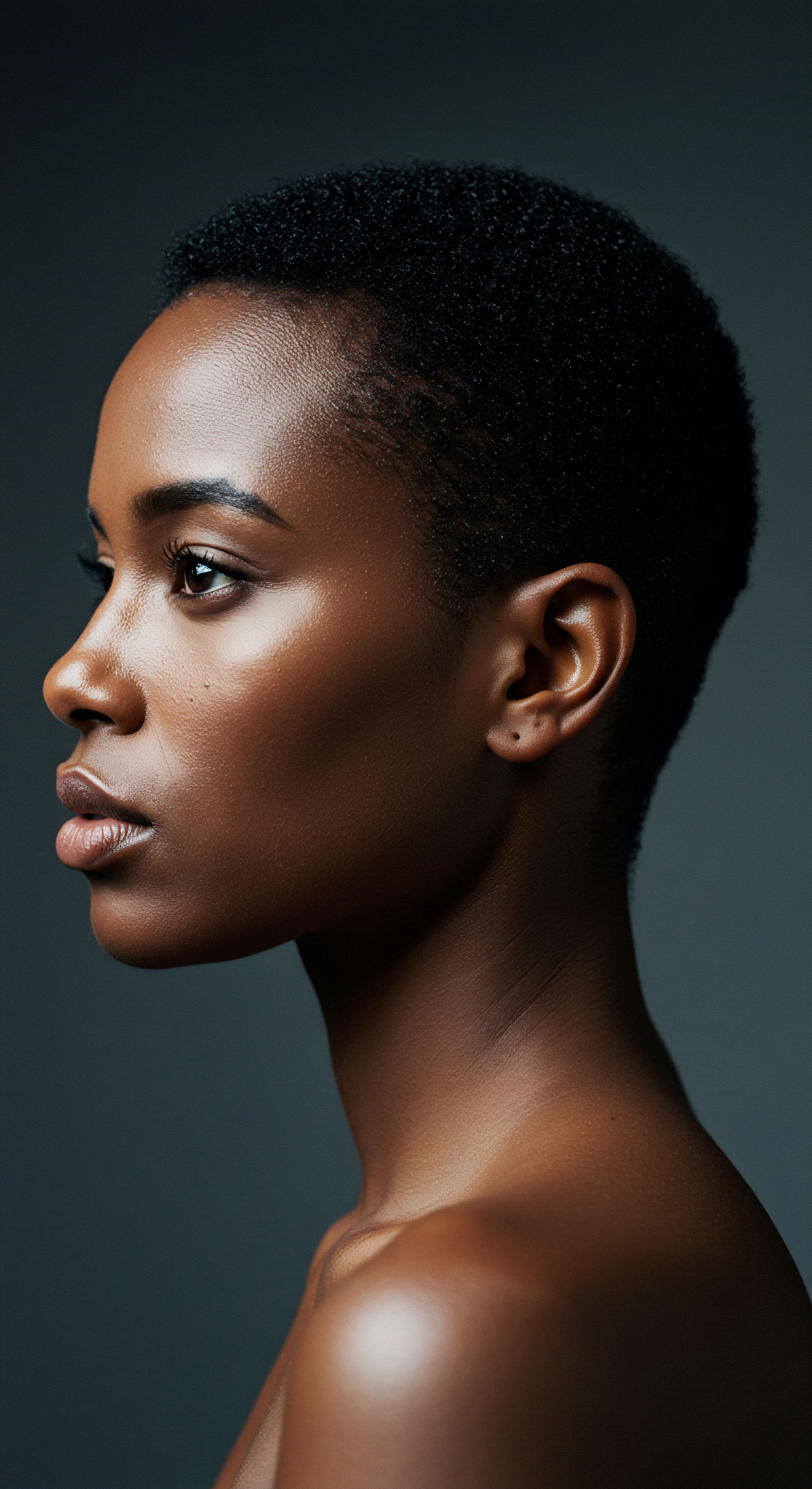
Relay
Moving beyond the visible and the tactile, how deeply does the very air we breathe shape the molecular landscape of our coiled hair? This section invites a deeper inquiry, pushing past surface-level observations to uncover the intricate, sometimes surprising, convergences of science, culture, and personal experience. We will consider the less apparent complexities that humidity unearths, drawing upon research to paint a more complete picture of this profound interplay.
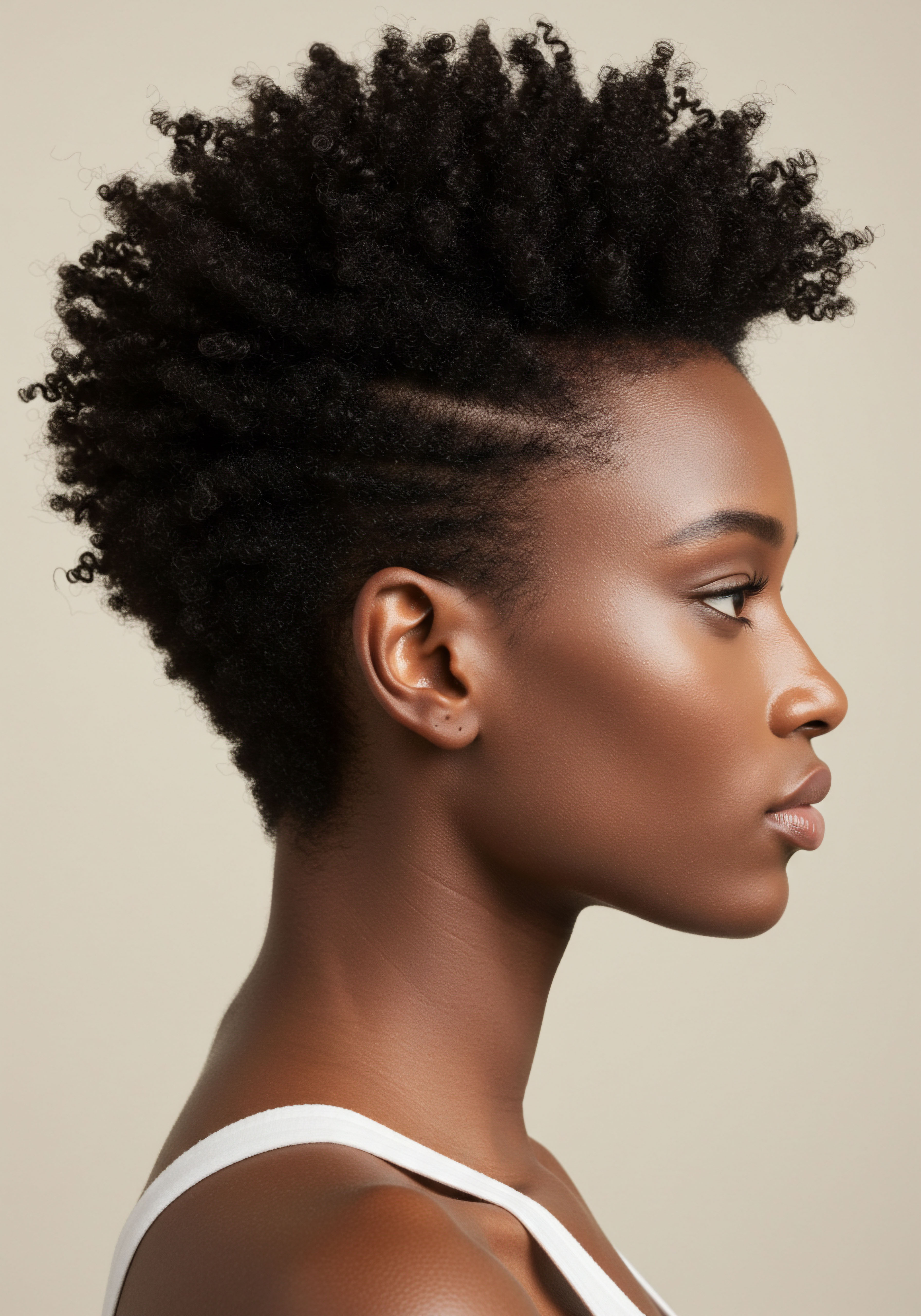
The Biophysical Response of Keratin to Water
At its fundamental level, the interaction between hair and humidity is a biophysical phenomenon rooted in the properties of Keratin, the primary protein composing hair. Keratin proteins possess numerous sites capable of forming hydrogen bonds with water molecules. When the ambient humidity rises, the hair fiber absorbs water from the air.
This absorption leads to a physical swelling of the hair shaft. Research indicates that at 40% relative humidity, hair can increase in diameter by 5%, and at 100% relative humidity, this increase can be almost 14%.
This swelling, while appearing as mere frizz on the surface, has deeper implications. The increased girth means that the cuticle scales, which typically lie flat, stand out. This allows more water to enter areas that should be protected by the cuticle, potentially weakening the hair over time due to strain. The phenomenon is particularly pronounced in coiled hair due to its already asymmetrical mechanical stresses.
Beyond mere swelling, humidity also influences the internal structure of keratin. Hydrogen bonds, which contribute to hair’s flexibility, are disrupted by water. When hair dries, these bonds reform, locking the hair into its new shape.
In a humid environment, water molecules overwhelm these bonds, causing the hair to revert to its natural coiled state or become even curlier. This constant cycle of swelling and deswelling, known as Hygral Fatigue, can contribute to the gradual weakening of the hair fiber, particularly for highly porous hair.

The Cultural Context of Hair and Humidity
The relationship between hair and humidity is not solely a scientific one; it is deeply interwoven with cultural identity and historical practices, particularly within communities with textured hair. For generations, individuals have developed sophisticated, often unwritten, protocols for managing hair in diverse climates. These practices, passed down through families and communities, represent a rich repository of experiential knowledge that predates modern cosmetic science.
For instance, the historical use of natural oils and butters in various African and diasporic hair traditions served not only as conditioning agents but also as environmental shields. These substances, by creating a hydrophobic layer, would have helped to mitigate the effects of fluctuating humidity, keeping the hair supple in dry conditions and helping to control excessive swelling in moist environments. This ancient wisdom often aligns with modern scientific understanding of lipid-based sealants.
The very perception of “frizz” itself can hold cultural nuances. While often framed as a problem in Western beauty standards, the natural expansion of coiled hair in humidity can also be seen as a manifestation of volume and life, a celebrated aspect of certain aesthetics. Understanding this cultural lens adds a layer of depth to the conversation, moving beyond simple problem-solving to a recognition of inherent beauty.
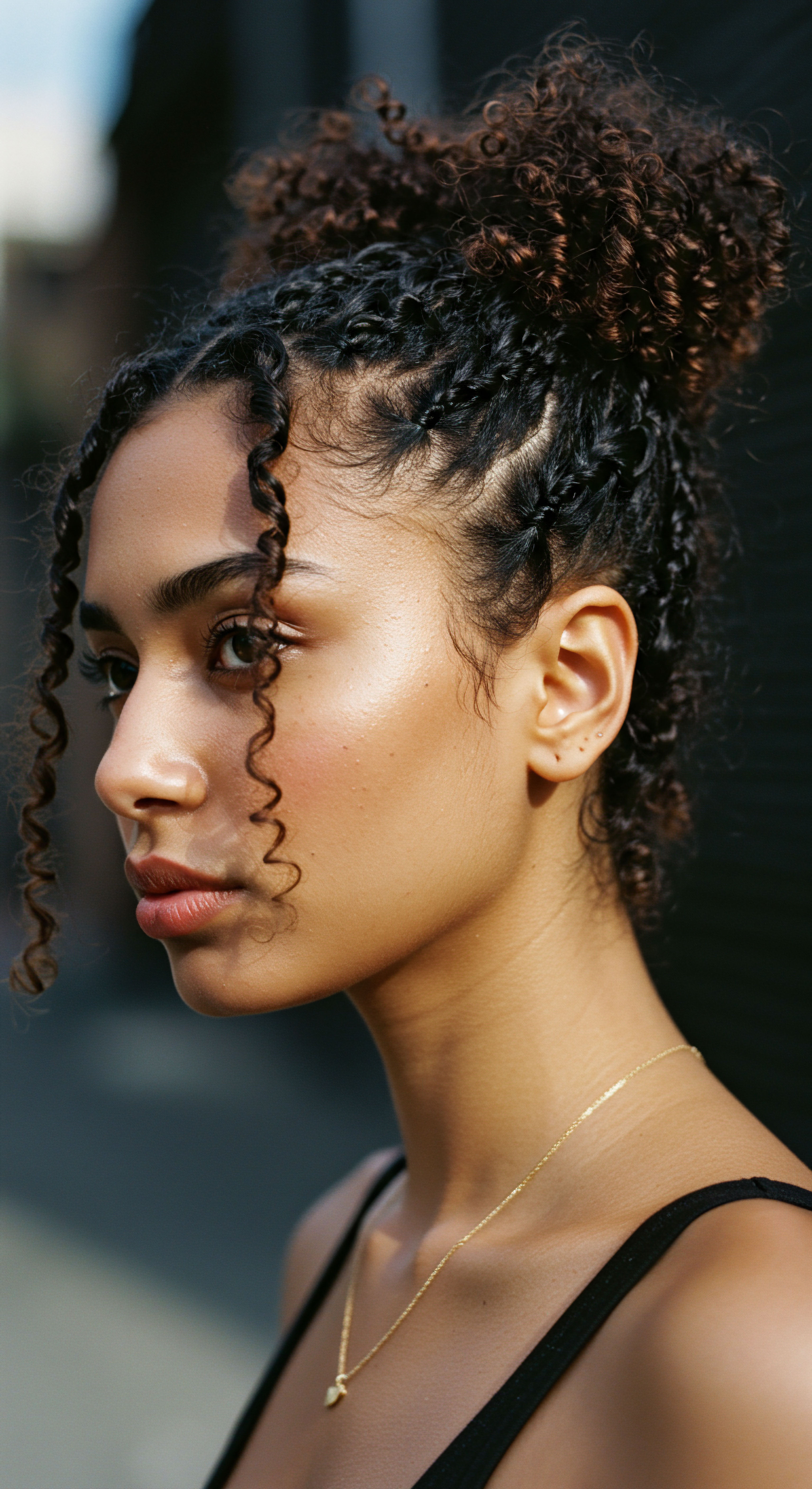
The Unique Challenge of Coiled Hair ❉ A Data Point
A common misconception suggests that Afro-textured hair is inherently “dry” due to its structure. While it can be prone to moisture loss, some research presents a surprising counterpoint. A study published in the journal The Genomic Variation in Textured Hair ❉ Implications in Developing a Holistic Hair Care Routine indicates that Afro-textured hair actually possesses the highest overall lipid content among ethnic hair types, estimated to be 2.5 to 3.2 times higher than European and Asian hair, respectively.
Despite this higher lipid content, it is still often characterized as dry. This apparent paradox highlights that the distribution and permeability of these lipids, along with the unique coiled structure, are more significant than total lipid amount in determining perceived dryness and moisture barrier function.
This particular finding challenges the simplistic notion of “dry hair” and redirects our focus to the complex interplay of internal lipids, cuticle architecture, and environmental responsiveness. The high lipid content might contribute to a lower radial swelling percentage in water compared to European hair, suggesting a more complex moisture interaction than simply “absorbing too much water.” The key for coiled hair, then, becomes optimizing this existing lipid barrier and managing the delicate balance of water absorption and desorption. Optimal permeability, neither too open nor too closed, prevents rapid changes in water content, which is essential for maintaining hair integrity.

Hair’s Vulnerability and Resilience in Environmental Extremes
The impact of humidity extends beyond mere aesthetics, touching upon the hair’s long-term health and structural integrity.
- UV Radiation and Humidity ❉ Exposure to ultraviolet (UV) radiation, especially in combination with high humidity, can lead to increased protein loss in hair. Higher humidity levels also lead to increased formation of sulfur-based radicals, which can result in more disulfide bond cleavage in hair proteins. This means that the very elements that define hair’s strength can be compromised by this environmental combination.
- Chemical Treatments and Humidity Sensitivity ❉ Hair that has undergone chemical treatments, such as coloring, perming, or relaxing, often has a compromised cuticle layer. These treatments can remove the protective 18-MEA layer and break disulfide bonds, making the hair more porous and hydrophilic. Such hair becomes even more susceptible to the adverse effects of humidity, absorbing water more readily and experiencing greater swelling and frizz.
- The Adaptability of Hair ❉ While hair cannot “acclimatize” in the way living tissue does, its response to humidity can be managed through consistent care. A study on the viscoelastic behavior of human hair shows that its mechanical properties are dependent on time, temperature, and humidity, and models can predict its recovery after curling. This suggests that while hair reacts to its environment, its inherent structure provides a degree of resilience that can be supported through informed practices.
The intricate dance between coiled hair and atmospheric moisture extends to the very protein structures, revealing a biophysical sensitivity that informs effective care.
The pursuit of serene strands in a world of shifting humidity requires a holistic perspective. It demands not only an understanding of the molecular mechanics but also an appreciation for the cultural heritage that has long navigated these environmental dialogues. The science confirms what generations have observed ❉ coiled hair possesses a unique responsiveness to its surroundings, a responsiveness that calls for mindful care, allowing its inherent beauty to shine through, regardless of the forecast.

Reflection
Our journey through the interplay of fluctuating humidity and coiled hair’s moisture barrier unveils a narrative far richer than a simple cause-and-effect. It is a story of resilience, of the delicate balance within each strand, and of the profound wisdom found in both scientific inquiry and ancestral practices. As we consider the intricacies of keratin, the dance of hydrogen bonds, and the protective embrace of lipids, we recognize that our hair is not merely an accessory but a responsive part of our being, continually in conversation with the world.
The care we offer becomes a reciprocal act, honoring its natural inclinations while shielding it from extremes. May this deeper acquaintance with your coils inspire a renewed sense of purpose in your hair care, a gentle, knowing hand guided by both curiosity and profound respect for the beauty that is uniquely yours.
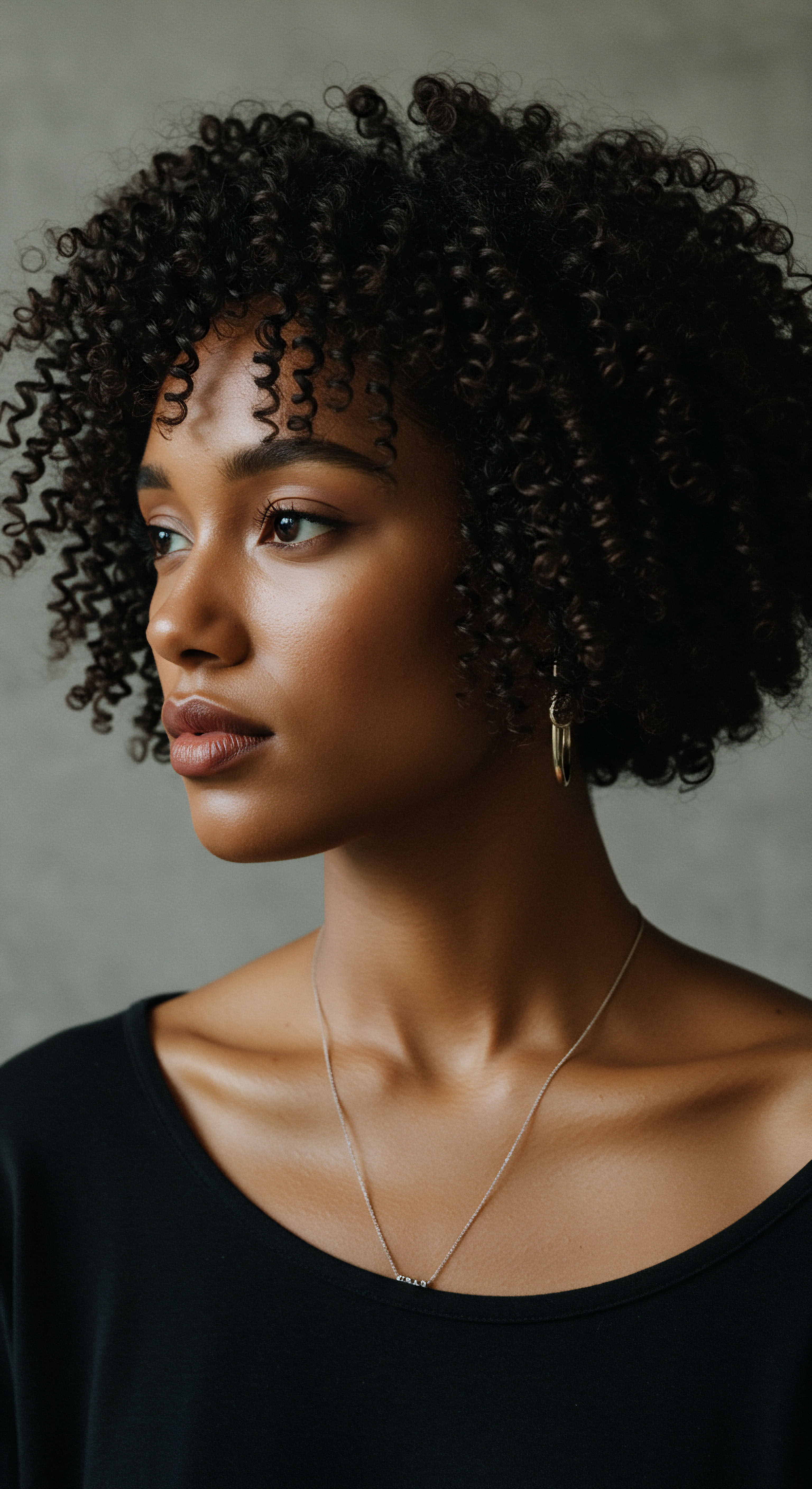
References
- Barba, C. et al. (2019). Ethnic hair ❉ Thermoanalytical and spectroscopic differences. International Journal of Cosmetic Science, 41(6), 567-574.
- de la Mettrie, J. (2000). Hair and Hair Care (Cosmetic Science and Technology). CRC Press.
- Robbins, C. R. (2012). Chemical and Physical Behavior of Human Hair. Springer.
- Schwartz, J. R. & Schlosser, B. J. (2019). The exposome impact on hair health ❉ etiology, pathogenesis and clinical features – Part I. Journal of Clinical and Aesthetic Dermatology, 12(11), 32–39.
- Sivakumaran, N. & Subramanian, S. (2024). Revolutionizing Hair Care with Cosmetic Products. Asian Journal of Pharmaceutical Research and Development, 12(3), 101-106.
- Sonawane, S. K. Shinde, P. P. & Shelke, S. J. (2020). Shampoos ❉ Hair Care Cosmetics. Research Journal of Topical and Cosmetic Sciences, 11(2), 1-6.
- The Genomic Variation in Textured Hair ❉ Implications in Developing a Holistic Hair Care Routine. (2023). MDPI .
- Wagner, M. & Wagner, J. (2013). Hair Swelling in Water. Science-y Hair Blog .